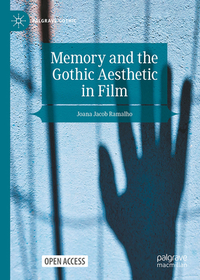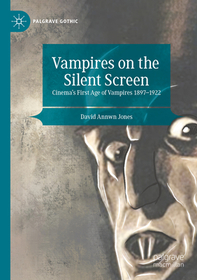
Memory and the Gothic Aesthetic in Film
Sorozatcím: Palgrave Gothic;
-
20% KEDVEZMÉNY?
- A kedvezmény csak az 'Értesítés a kedvenc témákról' hírlevelünk címzettjeinek rendeléseire érvényes.
- Kiadói listaár EUR 53.49
-
22 184 Ft (21 128 Ft + 5% áfa)
Az ár azért becsült, mert a rendelés pillanatában nem lehet pontosan tudni, hogy a beérkezéskor milyen lesz a forint árfolyama az adott termék eredeti devizájához képest. Ha a forint romlana, kissé többet, ha javulna, kissé kevesebbet kell majd fizetnie.
- Kedvezmény(ek) 20% (cc. 4 437 Ft off)
- Kedvezményes ár 17 748 Ft (16 902 Ft + 5% áfa)
Iratkozzon fel most és részesüljön kedvezőbb árainkból!
Feliratkozom
22 184 Ft

Beszerezhetőség
Megrendelésre a kiadó utánnyomja a könyvet. Rendelhető, de a szokásosnál kicsit lassabban érkezik meg.
Why don't you give exact delivery time?
A beszerzés időigényét az eddigi tapasztalatokra alapozva adjuk meg. Azért becsült, mert a terméket külföldről hozzuk be, így a kiadó kiszolgálásának pillanatnyi gyorsaságától is függ. A megadottnál gyorsabb és lassabb szállítás is elképzelhető, de mindent megteszünk, hogy Ön a lehető leghamarabb jusson hozzá a termékhez.
A termék adatai:
- Kiadás sorszáma 2025
- Kiadó Springer Nature Switzerland
- Megjelenés dátuma 2024. november 29.
- Kötetek száma 1 pieces, Book
- ISBN 9783031736278
- Kötéstípus Keménykötés
- Terjedelem281 oldal
- Méret 210x148 mm
- Nyelv angol
- Illusztrációk XV, 281 p. 8 illus. Illustrations, black & white 616
Kategóriák
Hosszú leírás:
This open access book defines the cinematic Gothic as an aesthetics of memory and exile. Guided by three intersecting concepts – memory, travelling, and touch – it suggests that the cross-border movements of exiles, émigrés, and professional travellers had a crucial impact on the emergence, development, and dissemination of the Gothic. This approach expands the canon to overlooked films, filmmakers, and national traditions. Drawing on film, memory, and gothic studies, the book urges the reader to think across other disciplines, including phenomenology, neurology, cognitive neuroscience, and disability studies. From hands to pianos, accordions, gloves, amnesia, and wounded bodies, the volume proposes a reappraisal of the Gothic by redrawing its scope, retracing its origins, and refocusing attention on surfaces as sites of socio-political meaning.
TöbbTartalomjegyzék:
Chapter 1. Introduction: The Gothic Aesthetic.- Chapter 2. Memory as Personal History: Émigrés, Exiles, and Professional Travellers.- Chapter 3. Memory-Objects and Journeys of Re-collection.- Chapter 4. Memory as Touch: The Hand, Amputation, and Sensory Contagion.- Chapter 5. Tactile Travelling, Manual Space, and the Duality of Gothic Hands.- Chapter 6. Pathological Journeys, Gloves, and ‘Affect-Logic’.- Chapter 7. Amnesia and Oblivion.- Chapter 8. The Gothic Piano: Elegy to an Absence.- Chapter 9. Conclusion: Routes of Re-membering.
Több




